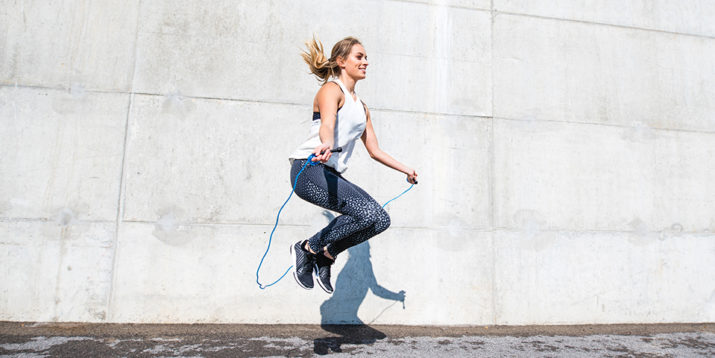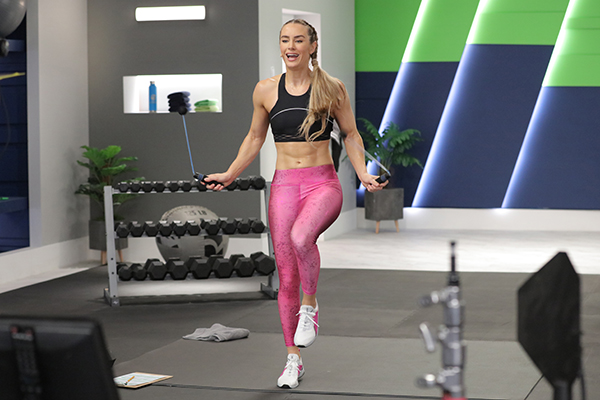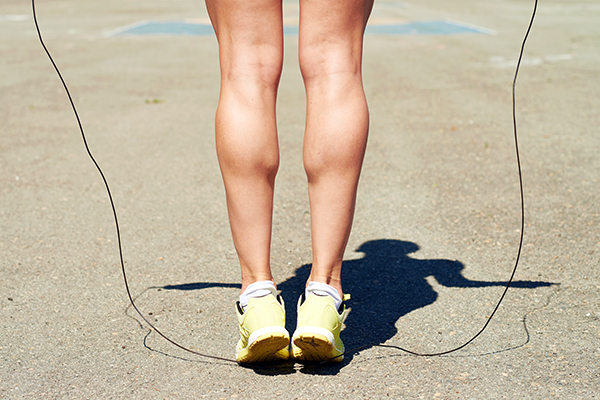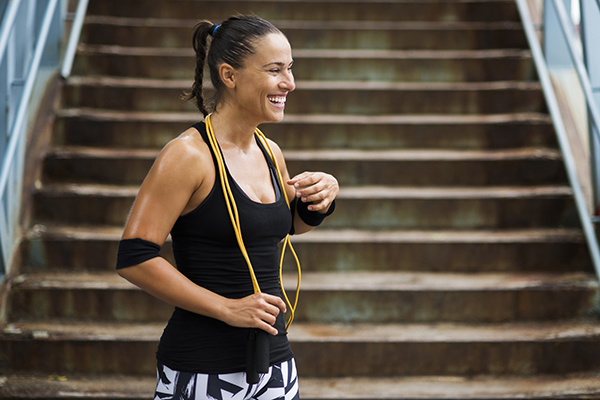What Muscles Does Jumping Rope Work?

You know jump rope workouts get you winded fast, but that they also build muscle in a major way.
Yep, one of the benefits of jumping rope is building muscle, says Cody Braun, CPT, assistant manager of fitness at Beachbody.
That muscle makes you stronger in and out of the gym and improves your overall health.
And, get this, it’s the key to hitting your weight loss goals. Why?
Because muscle burns fat.
After all, the amount of lean muscle on your frame is one of the biggest factors in setting your basal metabolic rate, or how many calories you burn each and every day — without trying.
Research from the University of Nebraska shows that just 12 weeks of regular jump rope workouts improves the body’s balance of lean muscle versus fat tissue.
Pro tip: Check out #mbf Muscle Burns Fat with Megan Davies to learn how to incorporate jumping rope into your exercise plan.

What Muscles Does Jump Rope Work?
So what muscles does jump rope work? Simply put, all of them!
But here’s a breakdown to zero in on the main muscles jump rope works — plus how to target each of them for max muscle gains.
Thighs and Hips
If you’re jumping, your quads, glutes, and hamstrings are hard at work, powerfully straightening your knees and hips to help you catch air — and then controlling each descent, explains Lirjon “Logan” Fisniku, CPT, Chicago-based personal trainer.
That’s good news for anyone who wants to improve their strength, running prowess, or body composition; these muscles are some of the largest in the entire human body.
If you want to kick your glute work into overdrive, try incorporating some single-leg jump rope exercises into your routine.
While they’ll have to generate double the force to power each hop, they’ll also have to work overtime to keep you stable on one leg at a time.

Calves
Jumping rope hits some muscles that far too many strength workouts forget: the calves, Fisniku says.
This is the primary muscle group that jumping rope works.
Comprising both the gastrocnemius and the soleus muscles, the calves are in charge of extending your ankles with each jump.
And, let’s face it, you probably aren’t going to get over the rope flat-footed.
Plus, according to the American Council on Exercise, jumping rope also improves the elasticity of the connective tissues surrounding the calf muscles.
The result: More power and less chance of injury.
To best build your calf muscles with jump rope exercises, try to land on the balls of your feet, then lower your heels all of the way to the ground before going into your next push-off.

Shoulders and Back
If you phone it in, no, you probably won’t feel much happening in your shoulders or back.
But if you prioritize good form, keeping your shoulders firm and scaps pinned down and back, your rhomboids, deltoids, and rotator cuffs will score major benefits.
“Your shoulder stabilizers control the constantly shifting weight of the rope,” Braun says. (Yes, weighted ropes will significantly increase the amount of upper-body work involved.)
Jumping rope may be a good conditioning tool for athletes like volleyball players due to the benefits of increased shoulder strength, according to research published in the Journal of Sports Rehabilitation.
Increased shoulder strength is also critical to reducing the risk of injury in exercises like overhead presses and back squats.
Core
One of the most under-appreciated benefits of jumping rope is next-level core strength.
“When you are jumping rope, you should be engaging your core to get the most out of the exercise,” Braun says.
Think about jump rope exercises like jumping planks: Your transverse abdominis, your inner-most core muscle, should be just as braced.
Keeping your core in a straight, rigid line will allow the most efficient transfer of power between your lower and upper body while also protecting your lower back from the impact forces associated with each landing, Fisniku says.
FYI, if you’re wanting to also target your obliques, try adding side-to-side hops into your jump rope workout.
Arms
Yes, jump rope builds arm muscle, training isometric (hold it right there!) strength in your forearms.
And it sends your forearms and grip strength into overtime — which is great for your overall exercise performance and progress, Braun says.
As small of muscles as they are, your finger flexors, are the linchpin to performing chin-ups, deadlifts, and carries. Translation: Improve your grip and you’ll improve at everything.
